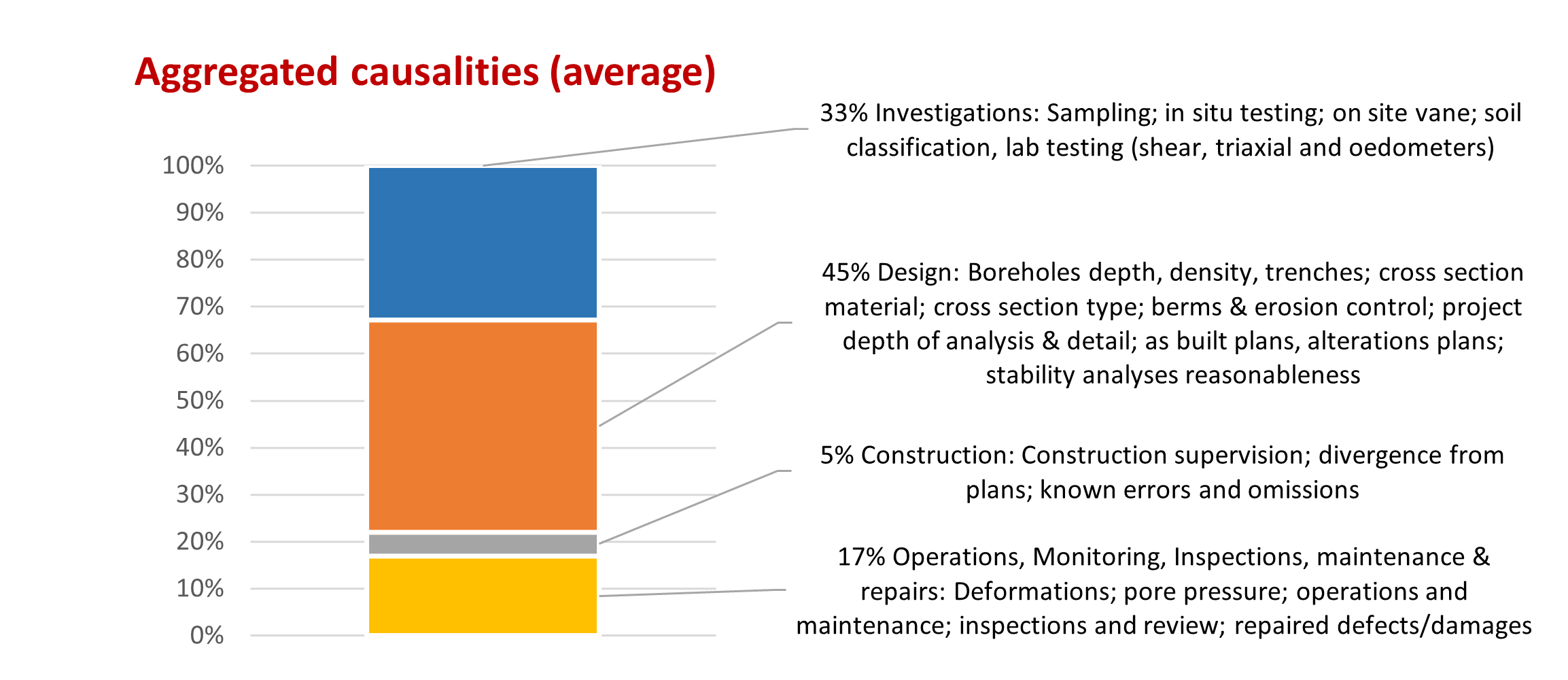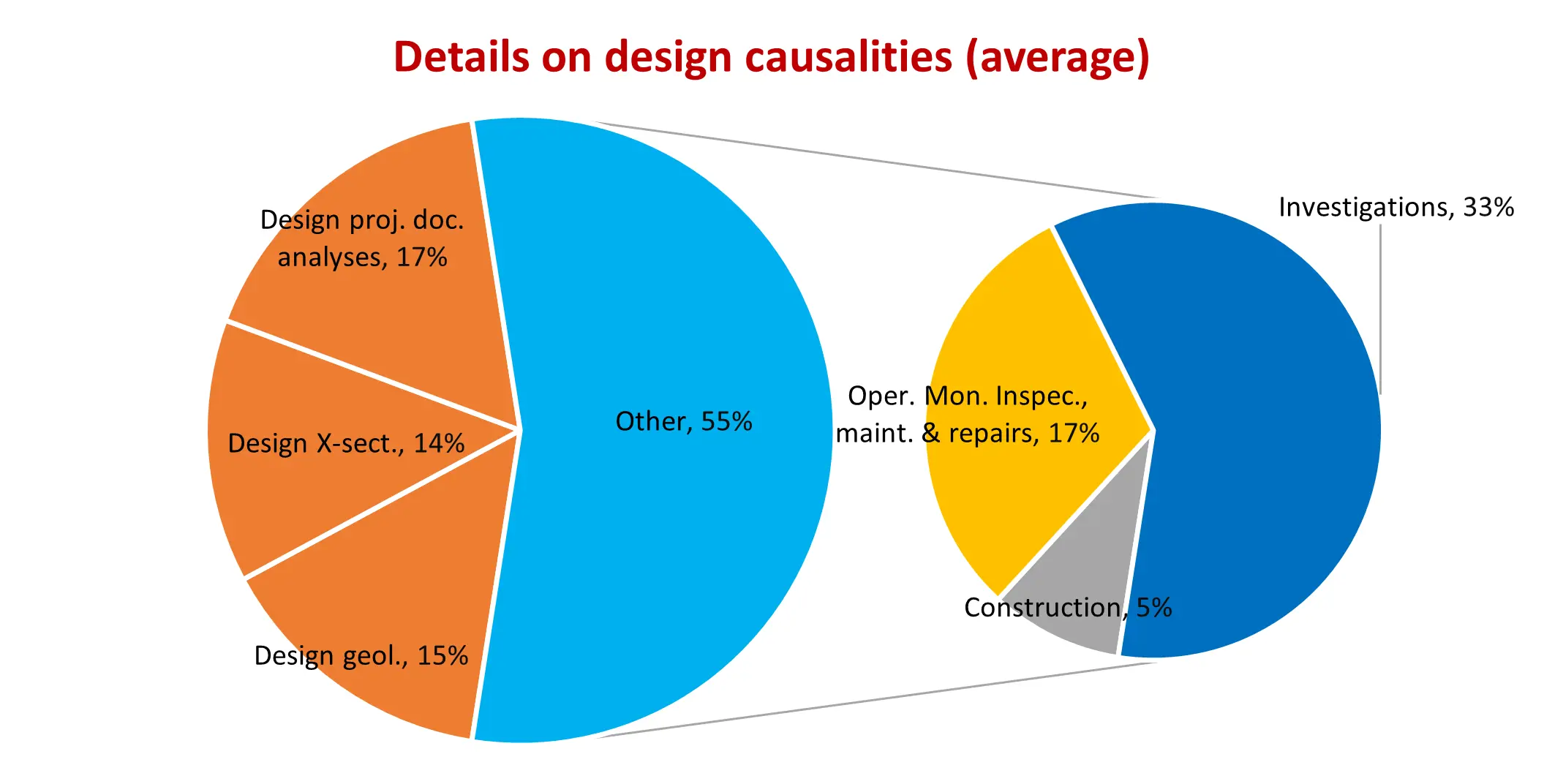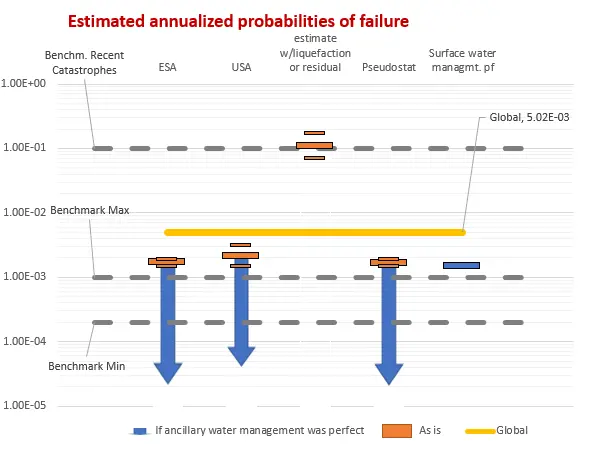ORE2_Tailings results become an integral part of the continuous check on measurable performance objectives presented in Requirement 7.3. For instance, annualized probability of failure of the system is evaluated in the example at pf=5.02E-03, i.e. a value higher than the benchmark max. The annualized probability of ancillary water management facilities failure included in the above estimates is 1.45E-03.
As one can immediately notice, three cases are strongly influenced by the probability of failure of the ancillary water management. Mitigation focusing on enhancing the ancillary water management facilities could easily bring all those cases to benchmark level or better. However, the global probability of failure is strongly influenced by the liquefaction/residual conditions, and the engineer should simulate various mitigative scenarios to search for the most convenient approach.
Notes on Seismic and Static Liquefaction/Residual
ORE2_Tailings accepts various sets of return-accelerations. The influence of minor quakes on the annualized probability of failure should not be neglected (section 11.2.3, page 164 of Tailings Dam Management for the Twenty-First Century). Those quakes have a smaller acceleration but are more frequent than a maximum considered earthquake, for example.
Another unique feature of ORE2_Tailings is the consideration for the potential triggers of liquefaction/residual events. ORE2_Tailings considers eight of these for which the engineer and owner have to estimate potential “frequencies” (see our book, Section 9.3, page 136). For instance, one of these is “access of heavy equipment working on dam.” The engineer could state, for example, “once a year” or perhaps “every two years”. ORE2_Tailings then evaluates the composite probability of the triggering event. Of course, this evaluation must pair with strict standard operating procedures the owner should publish and enforce in order to avoid catastrophic blunders during service life and after closure. This is part of Requirement 5.2.
Dam Break Estimated Consequences of Failure
ORE2_Tailings can accommodate a consequence scale the client would have established based on a code, such as the GISTM. However, as previously discussed, we consider these oversimplified consequence scales with caution. The main reason is that they focus on one dimension of the potential consequences. This particular aspect not only delivers poorly prioritized portfolios but is near useless for a company or a government wanting to use risk assessments for risk-informed decision-making.
Instead, ORE2_Tailings has a built-in simplified consequence evaluator. It uses again observable symptoms to evaluate consequences. We calibrated it on many decades of catastrophic failures. The model uses multiple consequence dimensions, e.g. harm to people, environment, flora and fauna and damage to third parties.
ORE2_Tailings Supports ICMM Global Industry Standard on Tailings Management Conformance Closing Remarks
We hope this example has given a clear view of the capabilities of ORE2_Tailings for a single dam system and how ORE2_Tailings supports GISTM conformance for a single system. Besides all the points above, ORE2_Tailings is also an instrument of conformance to Principle 10 and 15 by fostering better, repeatable and reality-anchored communication.



